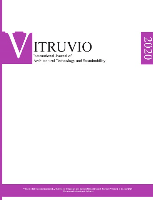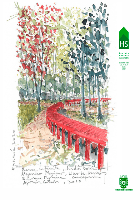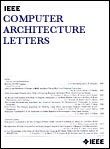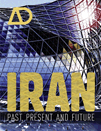
Techne-Journal of Technology for Architecture and Environment
Scope & Guideline
Transforming Spaces Through Technological Ingenuity
Introduction
Aims and Scopes
- Sustainable Architecture and Design:
The journal emphasizes research on sustainable architectural practices, integrating eco-innovative technologies and materials to enhance energy efficiency and environmental performance. - Energy Transition and Communities:
A core focus is on the transition to renewable energy, particularly through the development of energy communities that promote local energy independence and sustainability. - Digital Technologies in Architecture:
The journal explores the impact of digital tools and technologies on architectural design and urban planning, including the use of AI, IoT, and data-driven methodologies. - Cultural Heritage and Urban Regeneration:
Research also addresses the role of cultural heritage in urban regeneration, examining how historical contexts can be reimagined to support sustainable development. - Interdisciplinary Approaches:
The journal encourages interdisciplinary research that combines insights from architecture, engineering, environmental science, and social sciences to foster innovative design solutions.
Trending and Emerging
- Climate Resilience and Adaptation:
A growing emphasis on resilience strategies in architecture, focusing on how buildings can adapt to climate change and extreme weather events. - Community-Centric Energy Solutions:
Recent publications highlight the importance of community-driven energy solutions, such as renewable energy communities and cooperative models for energy management. - Digital Transformation in Design:
The integration of digital technologies, including AI and data analytics, is increasingly featured, showcasing their role in enhancing architectural design and urban planning. - Ecological and Regenerative Design:
There is a notable trend towards ecological design principles that not only minimize harm but actively contribute to environmental regeneration. - Interdisciplinary Collaboration:
Emerging themes reflect a collaborative approach across disciplines, integrating insights from various fields to address complex challenges in architecture and urbanism.
Declining or Waning
- Traditional Construction Methods:
There is a notable decrease in discussions surrounding traditional construction methods, as the focus shifts towards innovative, sustainable practices and materials. - Generic Urban Planning Models:
The journal seems to be moving away from generic urban planning models that do not integrate technology or sustainability, favoring more context-specific and adaptive approaches. - Historical Architectural Styles:
Research centered on historical architectural styles without a contemporary context or relevance to current sustainability challenges is becoming less frequent. - Conventional Energy Systems:
The discourse around conventional energy systems is waning as the journal increasingly prioritizes renewable energy solutions and community-based energy initiatives. - Static Design Approaches:
Static or non-adaptive design methodologies are losing traction in favor of dynamic, flexible designs that can respond to changing environmental conditions and user needs.
Similar Journals

ACE-Architecture City and Environment
Unlocking the Potential of Urban Planning and DesignACE-Architecture City and Environment, published by Universitat Politècnica de Catalunya in Spain, serves as an essential repository for innovative research and insights that intersect the fields of architecture, urban studies, and environmental planning. Since its establishment as an Open Access journal in 2006, it has facilitated widespread accessibility to scholarly work, fostering a collaborative and inclusive academic community. The journal has consistently maintained a prominent standing within its field, reflected in its 2023 Quartile rankings—, Q3 in Geography, Planning and Development, and Q2 in Urban Studies. With a publication horizon extending from 2011 to 2024 and an impressive Scopus ranking among peers, it offers a comprehensive platform for researchers to disseminate their findings and engage with contemporary challenges in urban environments. ACE is pivotal for professionals and students alike, striving to shape the future of sustainable architecture and urban planning through rigorous scholarship.

Architect
Cultivating Knowledge in the Evolving Landscape of ArchitectureArchitect is a publication dedicated to the diverse and evolving field of architecture and design, presented by the reputable HANLEY WOOD, LLC. Since its inception in 1975, the journal has traversed critical periods in architecture, offering valuable insights and research that cater to both practitioners and academics alike. The journal holds a Q4 ranking in both Architecture and Visual Arts and Performing Arts, indicating its niche presence within the crowded scholarly landscape. Despite its recent rankings within the Scopus, where it lies in the lower percentiles of the architecture category, the Architect journal provides platforms for innovative discussions and explorations in design, helping to shape the discourse in the architectural community. While the journal is currently accessible via traditional subscription models, it remains a critical resource for those seeking to bridge practice and theory in architecture. As it continues to evolve beyond its historical publication periods, Architect aims to nurture a rich environment for professional growth, scholarship, and dialogue among researchers, designers, and students engaged in the dynamic world of architecture.

Russian Journal of Building Construction and Architecture
Fostering Dialogue in Architectural and Construction PracticesRussian Journal of Building Construction and Architecture (ISSN: 2542-0526; E-ISSN: 2542-0526), published by the esteemed Voronezh State Technical University, serves as a vital platform for disseminating innovative research and practical applications in the fields of building construction and architecture. This journal, situated in Voronezh, Russia, aims to explore both the theoretical and empirical aspects of contemporary architecture and construction practices, fostering a robust dialogue among researchers, professionals, and academics. With an emphasis on open access to knowledge, the journal significantly contributes to global discourse by ensuring that findings are accessible to a wide audience. Underlining the importance of sustainable development and cutting-edge technologies in construction, the journal strives to publish high-quality research that addresses the challenges faced in today’s building environment, making it an invaluable resource for those committed to advancing the industry.

VITRUVIO-International Journal of Architectural Technology and Sustainability
Exploring innovative solutions in architectural technology.Welcome to the VITRUVIO-International Journal of Architectural Technology and Sustainability, a leading open-access journal published by UNIV POLITECNICA VALENCIA, EDITORIAL UPV since 2015 and based in Spain. With its ISSN 2444-9091, this journal is dedicated to advancing the field of architectural technology and sustainability, providing a vital platform for researchers, professionals, and students alike. The journal has made significant strides in the academic landscape, achieving a Q3 ranking in Architecture and a Q4 ranking in Building and Construction for 2023. It features a diverse range of scholarly articles that explore innovative practices, cutting-edge research, and sustainable solutions in architecture. With a Scopus ranking placing it at #70/189 in Architecture and #161/223 in Building and Construction, it is positioned within the 63rd percentile and 28th percentile respectively, demonstrating its increasing impact in these vital fields. We invite you to engage with our content and contribute to the ongoing discourse around sustainability in architectural practice.

International Journal of Built Environment and Sustainability
Exploring Innovations in Architecture and Urban PlanningInternational Journal of Built Environment and Sustainability, published by PENERBIT UTM PRESS, serves as a pivotal platform for the dissemination of research in the fields of architecture, urban planning, and sustainable development. With an E-ISSN of 2289-8948 and having embraced Open Access since 2014, this journal ensures that critical findings in built environment research are accessible to a global audience, fostering innovation and collaboration among researchers, professionals, and students. Although the H-index and specific scope are currently not detailed, the journal's commitment to advancing sustainable practices in the built environment makes it an invaluable resource for those dedicated to tackling the pressing challenges of sustainability in our communities. As part of its mission, the journal prioritizes high-quality, peer-reviewed articles that contribute to both academic theory and practical applications, solidifying its role in shaping the future of our built environments.

Revista Habitat Sustentable
Empowering Change through Sustainable Habitat InsightsRevista Habitat Sustentable, published by UNIV BIO-BIO in Chile, is a dynamic open access journal that has been contributing to the fields of architecture, engineering, and sustainable development since its establishment in 2011. With an ISSN of 0719-0700, this scholarly platform stands out for its commitment to disseminating high-quality research that addresses pressing issues in sustainability and urban planning. Currently, it holds commendable rankings in several categories, including Q2 in Architecture and Q3 in Urban Studies, reflecting its growing influence and outreach across various disciplines. The journal's mission is to foster interdisciplinary dialogue and encourage innovative approaches to habitat sustainability, making it an essential resource for researchers, professionals, and students engaged in addressing the complex challenges of our built environment. Accessible to a global audience, the Revista Habitat Sustentable is poised to play a pivotal role in shaping future research and policy in sustainable living and development.

IEEE Computer Architecture Letters
Driving Breakthroughs in Performance Optimization.IEEE Computer Architecture Letters is a distinguished academic journal published by the IEEE Computer Society, focusing on the dynamic field of computer architecture. With its ISSN 1556-6056 and E-ISSN 1556-6064, this journal has been a vital platform for disseminating groundbreaking research since its inception in 2002. As of 2023, it holds an impressive impact factor, being ranked Q2 in Hardware and Architecture, placing it among the top tier of journals in this domain (Scopus Rank #74/177). The journal aims to promote innovative ideas and developments in computer architecture that drive advancements in technology and engineering. Although it does not currently offer open access, it remains a pivotal resource for researchers, industry professionals, and students keen on exploring emerging trends and methodologies. Each published article contributes to a deeper understanding of hardware design, performance optimization, and architectural innovations, establishing IEEE Computer Architecture Letters as a cornerstone of academic excellence in the field.

Bagh-e Nazar
Bridging Theory and Practice in Urban StudiesBagh-e Nazar is a distinguished academic journal dedicated to the fields of art, architecture, and urbanism, published by the NAZAR RESEARCH CENTER in Tehran, Iran. With a focus on promoting scholarly research and innovative ideas, this journal serves as a platform for critical discussions and diverse perspectives on contemporary artistic and architectural practices. The journal is indexed under ISSN 1735-9635 and E-ISSN 2251-7197, reflecting its commitment to high academic standards and international visibility. Although currently not open access, it seeks to provide comprehensive insight into the socio-cultural dynamics influencing urban environments and artistic expressions. By bridging theory and practice, Bagh-e Nazar plays a pivotal role in advancing knowledge and fostering dialogue within the vibrant domains of art and architecture, making it an invaluable resource for researchers, professionals, and students alike.

ArcHistoR-Architecture History Restoration
Connecting Eras: The Art of Architectural RestorationArcHistoR-Architecture History Restoration is an esteemed open-access journal published by UNIV MEDITERRANEA REGGIO CALABRIA since 2014, focused on the multifaceted domains of architecture, history, and visual arts. This journal serves as a vital platform for the dissemination of research findings, innovative methodologies, and critical discussions surrounding the restoration and history of architectural practices, appealing to a diverse audience of researchers, professionals, and students in these fields. With a commitment to scholarly excellence, ArcHistoR has positioned itself within the academic community, reflected in its ranking in the 2023 category quartiles, where it secured Q4 in Architecture and Q3 in both History and Visual Arts and Performing Arts. The journal facilitates global collaboration and knowledge sharing in its areas of expertise, further underscoring its relevance and significance. Based in Italy, effective communication and cooperation in the restoration community can flourish through the journal's purview. For those dedicated to expanding their understanding and contributing to the discourse on architectural history and restoration, ArcHistoR is an invaluable resource.

ARCHITECTURAL DESIGN
Cultivating a Community of Design ThinkersARCHITECTURAL DESIGN, a leading journal published by Wiley Periodicals, Inc., serves as a vital platform for discourse in the fields of architecture and visual arts. With an ISSN of 0003-8504 and an E-ISSN of 1554-2769, this esteemed publication offers comprehensive insights into contemporary design practices and emerging architectural theories. Established in the United States and continuously evolving from 2002 to 2024, the journal has secured a prominent position with a Q3 status in Architecture and an impressive Q1 ranking in Visual Arts and Performing Arts as of 2023. Its Scopus rankings further affirm its relevance, with a percentile ranking of 82nd in the Visual Arts category. Although it does not currently offer Open Access options, the journal remains dedicated to disseminating high-caliber research and innovative design strategies that engage a diverse readership of researchers, professionals, and students alike. The contributions published within its pages are instrumental in shaping the discourse around architecture, making ARCHITECTURAL DESIGN an indispensable resource for anyone passionate about the built environment.